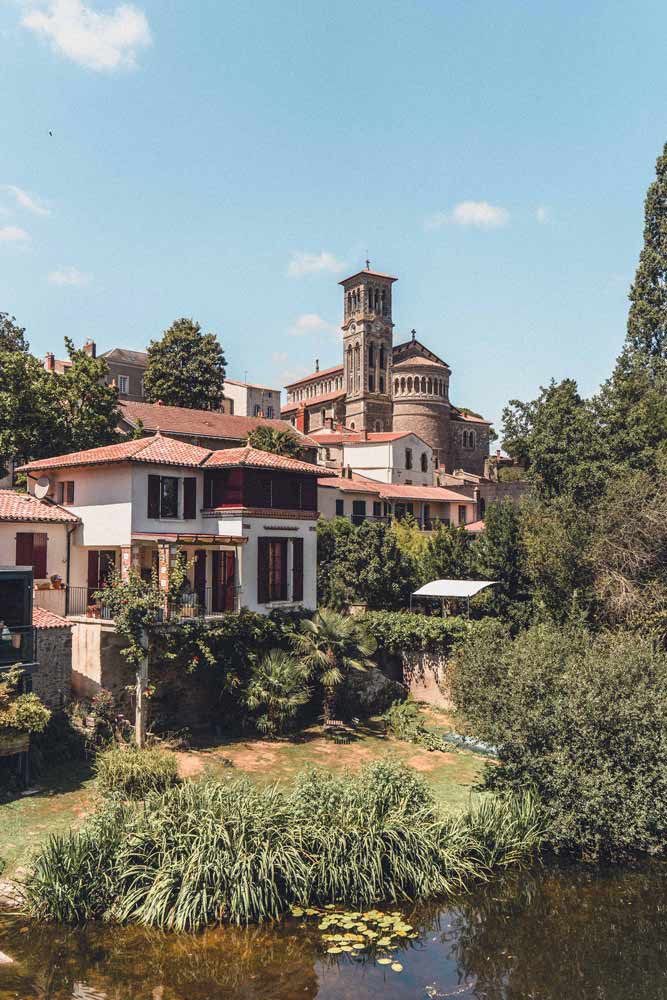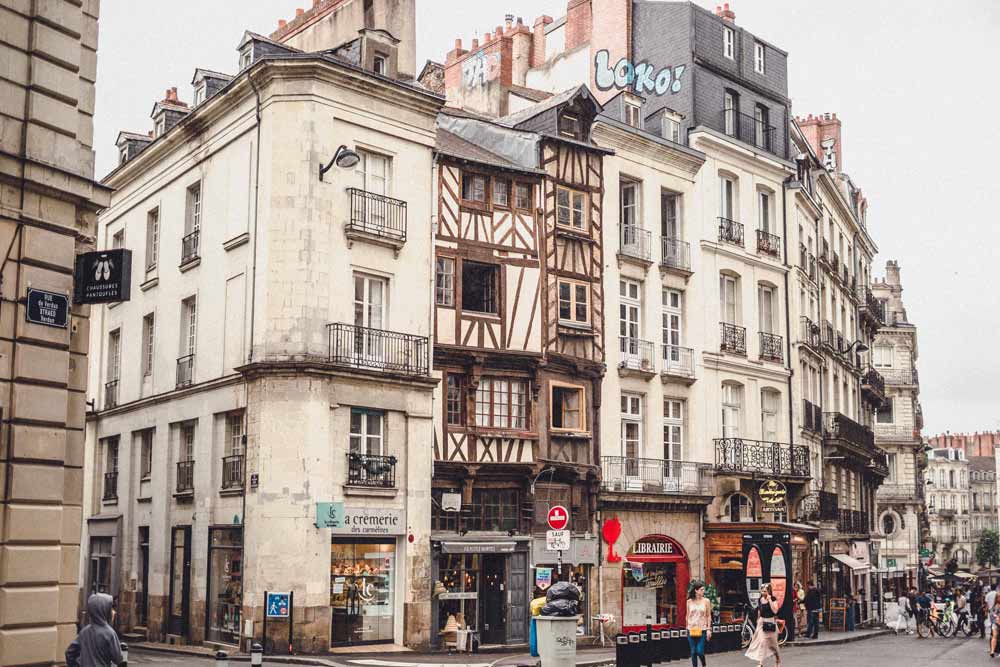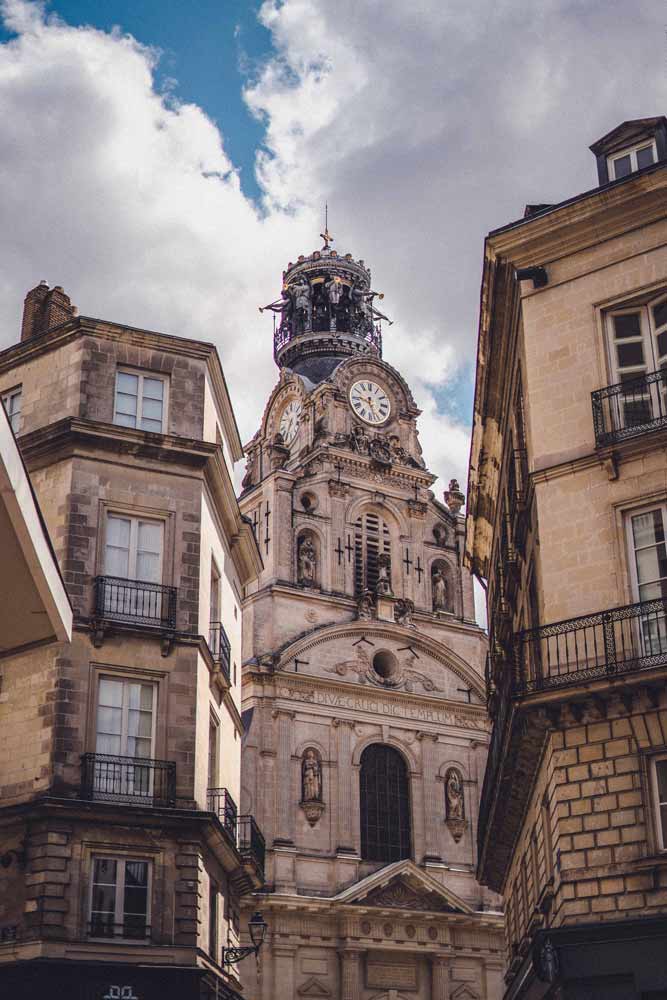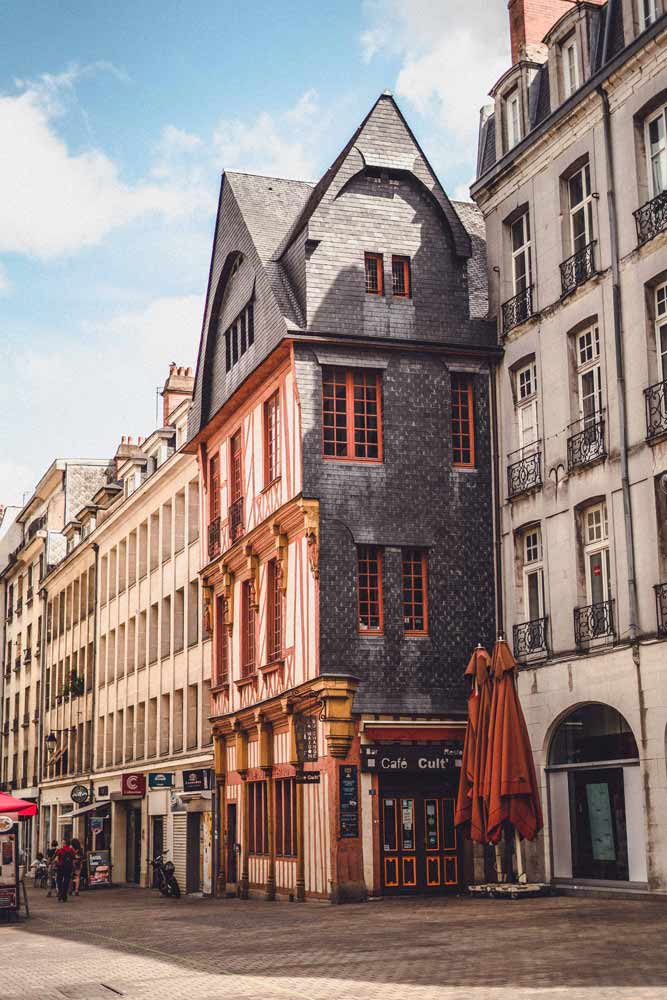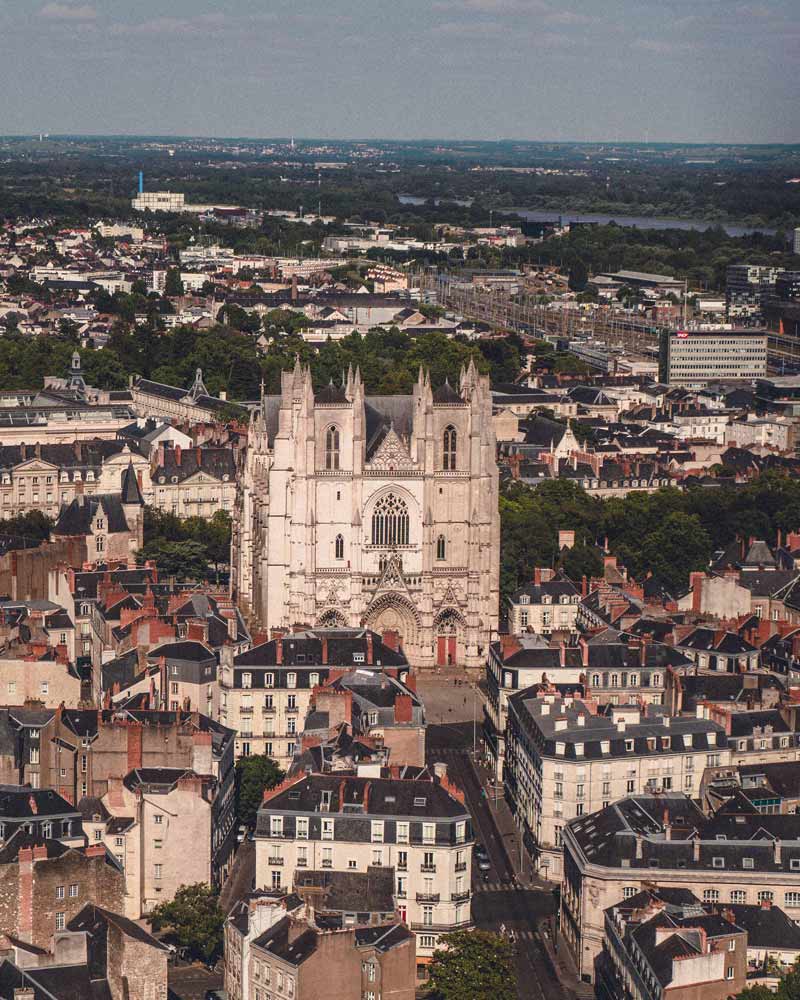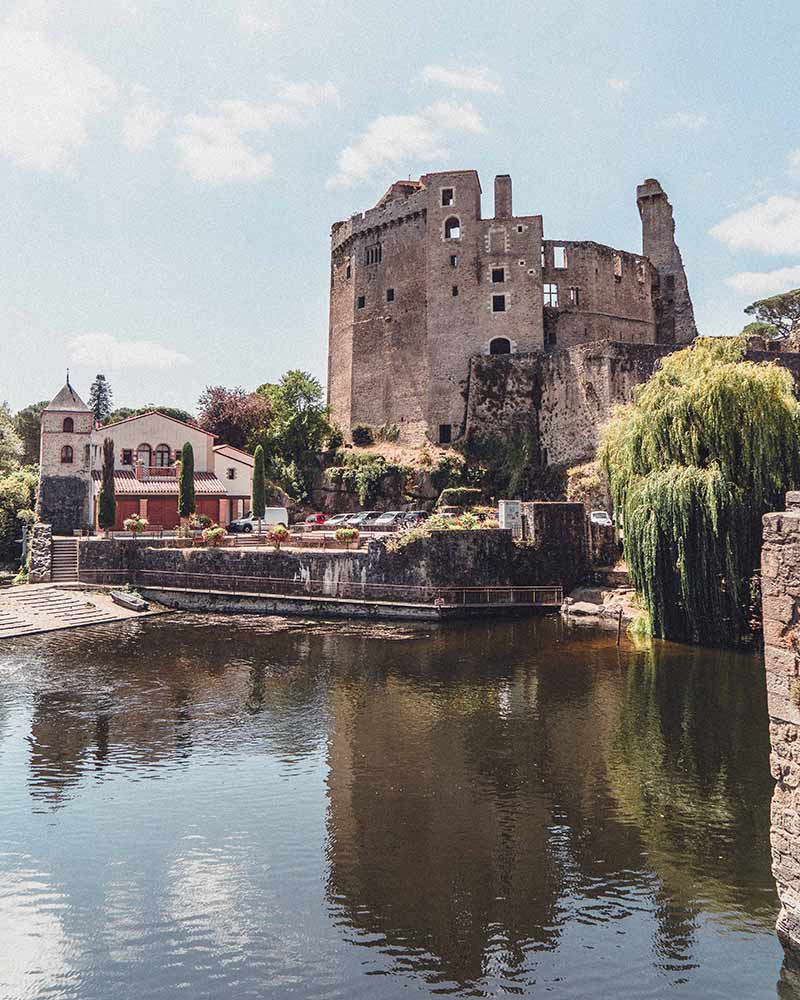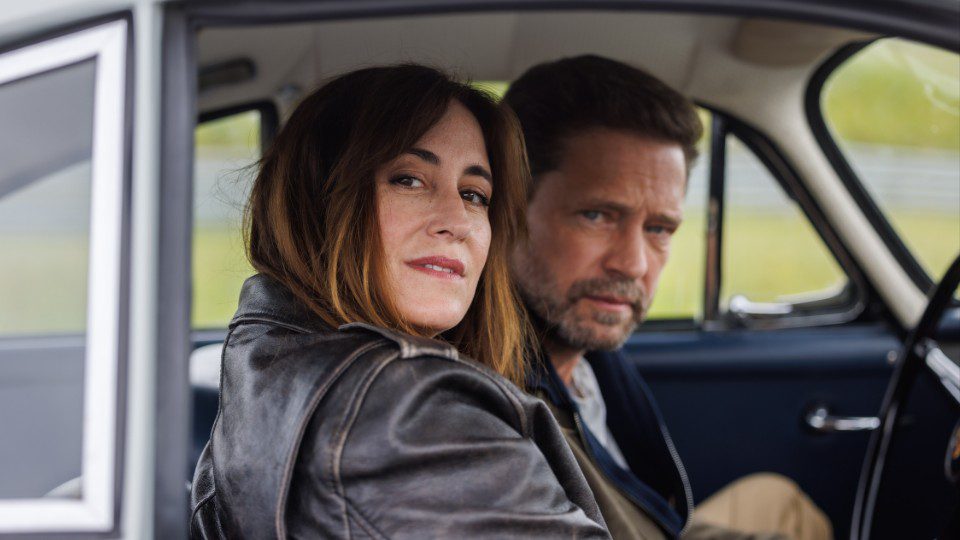
Pays de la Loire is located in western France in an area of the country which was once favored by the dukes and princes of Brittany. The region is so-called thanks to the presence of the River Loire running right through its center. Today, it’s an area which sees fewer tourists than the neighboring regions of Brittany and Occitanie, but is worth checking out nonetheless. Here are some of the more off the beaten path attractions to see in the region, as well as must-see places.
What is Pays de la Loire known for?
Pays de la Loire is translated into English as the Loire Lands and is a region of l’Hexagone that is most famed for its collection of châteaux, rugged Atlantic coastline, and is where the famed Loire River empties out into the sea.
The Loire is the longest river in Metropolitan France (running more than an impressive 1000 km or 621 miles) and passes through visitor favorites such as Blois, Tours, and Angers. Unlike many other administrative regions in France, which were formed less than a decade ago, Pays de la Loire was actually conceived in the 1950s after the amalgamation of several historical provinces; a part of Brittany, part of Anjou, and other little areas which have since been lost to the annals of time.
The capital of the region is Nantes, a port city which was the birthplace of acclaimed French author Jules Verne. Today, you can follow in the famous writer’s footsteps by visiting various spots scattered across the city.
Head to Église Sainte Croix to see Verne’s birthplace or learn more about the author’s life and times by visiting the Jules Verne Museum, which lies alongside the banks of the River Loire and was opened on the 150th anniversary of Verne’s birth.
Those who are interested in visiting French brocantes would do well to check out Montsoreau Flea Market (known in French as Les Puces de Montsoreau), which is home to one of the largest antique fairs in France. Unlike some other regional markets, this fair takes place throughout the year (including in the winter).
Every second Sunday of the month, dozens of vendors head to the banks of the River Loire, close to the château de Montsoreau (which now houses a contemporary art museum) to tout their wares. There are all sorts of things for sale, ranging from vintage clothing to antiquarian books and even second-hand furniture.
In a country which boasts one of the highest concentrations of châteaux in the world, history is never far away and, together with Centre-Val de Loire, Pays de la Loire boasts some of the most beautiful châteaux in France. Highlights include the châteaux of Angers (home to the impressive 14th-century Apocalypse Tapestry), Saumur, and Brézé.
Those who prefer to see architecture with a more ecclesiastical inspiration should head to Royal Abbey of Fontevraud, which was founded near the village of Chinon in 1101 and is the largest collection of monastic buildings in France. The 12th-century was particularly important for the French Gothic and is the period in which the construction of Notre Dame de Paris commenced.
Fontevraud abbey itself is most known for its association with Eleanor of Aquitaine, who is interred at the ecclesiastical complex. Eleanor lived in the 12th-century and was Queen of France following her marriage to King Louis VII. Due to her perceived failure (she bore Louis no male heir), their marriage was annulled, and Eleanor went on to marry King Henry II, thus becoming Queen of England.
Over on the gastronomic side of things, a particular mention has to go to the rich and varied wines from the area, which acquire a unique taste thanks to the vines’ exposure to the salty Atlantic sea breeze. One firm favorite from the area is Muscadet, which pairs beautifully with the region’s favorite food: seafood, of course!
Nantes
Nantes is one of the largest cities in France (in the top ten in terms of population size- number 6 to be precise) but remains fairly easy to fully discover over the course of a long weekend thanks to the fact that most of its top attractions are concentrated within a small radius that is easily reached on foot or by public transportation.
Though no longer a part of the region, Nantes was once the capital of Brittany. When I embarked on a walking tour of the city a fair few years ago, our tour guide explained that the city is not really part of the Loire area, nor is it really part of Brittany. Instead, it is a beautiful blend of both regions and this is reflected in no place more than the Château des Ducs de Bretagne.
A must-see while in the area, the well-preserved medieval Château still features high walled ramparts, which can be strolled along to glean a bird’s eye view of the city, and now houses a town museum. Pretty as a postcard, the medieval heart of Nantes is filled with timber-framed structures and a picturesque cathedral which is dedicated to St Peter and St Paul.
No mention of the history of Nantes can be given without mentioning its prolific involvement in the slave trade between the 17th and 19th-centuries, a fact that the city is still grappling to come to terms with to this day. During this period, Nantes was the principal slave-trading port in France. In 2012 a memorial to acknowledge the role of France in the New World slave trade was erected in the city.
If you’re traveling with children, or even for those who are simply young at heart, a trip to the Machines d’Ile de Nantes is a must. Drawing inspiration from Nantes’ most famous resident, steampunk Jules Verne, this area of the city was revitalized in the 2000s and showcases various out of this world machines (such as a giant elephant and giant sea monster) which can be ridden for a fee and are housed within a former naval shipyard.
Clisson
Delightful Clisson is perched alongside the River Sèvre Nantaise and is particularly unique thanks to its abundance of Italianate architecture which more resembles that found in Tuscany than western France! Small and compact, Clisson can easily be visited over the course of a few hours, making it the perfect day trip from Nantes.
The true highlight of the village is simply strolling around, taking in the ambiance, and allowing the village to reveal itself to you. One of the must-see attractions of Clisson is the Château de Clisson, a well-preserved fortification which finds its roots in the 11th-century, though much of what you see today was built in the 13th-century.
The Château was originally established by the Lords of Clisson in what was then Brittany. The stone structure was meant to serve as a way of protecting the region’s frontier. Today, the Château has been transformed into an open-air museum. For a fee, visitors can stroll the ramparts, admire the vast architecture, and imagine what life might have been like in the Middle Ages within the Duchy of Brittany.
Elsewhere in Clisson, there is plenty to delight the most discerning of visitor; the exposed timber-framed market hall still holds weekly markets every Friday, just as it has done since the 15th-century and the church dedicated to Notre Dame appears to be many centuries old but was actually only erected during the 19th-century.
Finally, in a somewhat interesting turn of events for such a small and sleepy town, the annual Hellfest, a rock festival focusing on Heavy Metal Music, is held in Clisson every summer!
Île d'Yeu
As its name would suggest, Yeu Island is an island just off the west coast of France, above the deep blue depths of the Atlantic Ocean. Characterized by its small size (the little island is only 10 km or 6.2 miles in length and 4 km or 2.5 miles in width), the true beauty of Yeu lies in its wilderness and rugged charm.
Thanks to its position facing the Atlantic Ocean, this is one of the best places in France to enjoy unspoiled sunsets overlooking the sparkling sea. Adventure enthusiasts will not be disappointed by the many activities available on the island, including hiking, kayaking, and even sailing. Don’t believe me about the beauty of Île d’Yeu? Be sure to check out the Murder In…: Yeu Island episode, now streaming on MHz Choice.
A final note
While not the most visited region of France, those who enjoy experiencing rural France and heading off the beaten path will soon be delighted and enthralled by the slow travel way of life in Pays de la Loire. From sipping on local muscadet wine to scaling châteaux which have stood the test of time, it’s possible to lose yourself for a week or two in the many charms of this off the beaten path area of l’Hexagone.
About the Author
Sophie Nadeau is a British Canadian travel writer currently residing in Paris with her French husband. She has been lucky enough to have lived in several different countries and has run her travel blog, solosophie.com, full time since 2017. With a particular interest in history and culture (especially if there’s a château visit involved), she spends her spare time painting, reading, cooking up vegetarian recipes, spending too much looking up dog photos online, and researching new hidden gems to discover.
